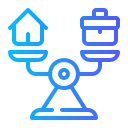Strategies for Seamless Freelance and Personal Life Integration
Chosen theme: Strategies for Seamless Freelance and Personal Life Integration. Welcome to a space where your independent work and your real life cooperate instead of competing. We’ll blend routines, boundaries, and stories that make balance feel achievable. Subscribe, comment, and shape this journey with your experiences.

Designing Flexible Boundaries That Actually Hold
List your non-negotiables—family dinner, school pickup, therapy, training—and protect them as seriously as client deadlines. Set tiered availability, where urgent requests have defined channels and clear criteria. Ask clients to acknowledge this in writing during kickoff to normalize respect.
Choose one anchor—walk, journaling, breathwork, or reading—that you keep even when the schedule explodes. Freelancer Maya swears by a 12‑minute stretch and handwritten plan. Small anchors stack into stability, protecting the rest of the day from chaos.
Time Architecture That Creates Flow
Spaces That Signal Work and Life Modes
Create a dedicated focus corner, a collaboration table, and a recovery nook. Even a folding screen or rug defines zones. Freelance dad Luis marked a ‘quiet line’ with painter’s tape—silly, but remarkably effective for his energetic twins.
Spaces That Signal Work and Life Modes
Build a grab‑and‑go kit: noise‑canceling headphones, notepad, webcam cover, chargers, portable light, sticky flags. When life pulls you to the kitchen or balcony, you still deliver. The ritual of unpacking becomes your mental on‑switch for focus.
Spaces That Signal Work and Life Modes
Use scent, light, and sound to cue mode changes: peppermint for deep work, warm lamp for family time, a short playlist for wrap‑up. Share a simple hand signal or door sign that children and partners can easily respect.

Client Onboarding That Normalizes Boundaries
Include response times, meeting windows, and emergency criteria in your welcome deck. Freelancer Jess adds a slide titled ‘How to Get the Fastest Yes from Me.’ It’s friendly, firm, and turns boundaries into performance advantages everyone appreciates.
Family Micro‑Stand‑Ups That Keep Peace
Hold a five‑minute morning check‑in: who needs quiet time, who’s cooking, who has a late call, what help is required. Kids love placing magnets on a board to claim responsibilities. Integration thrives when everyone sees the same plan.
Expectation Reset Scripts for Inevitable Changes
Prepare calm, respectful messages for delays or emergencies. Example: “I can deliver the draft by noon tomorrow with the revised scope; otherwise, we can swap priorities.” Having scripts ready reduces stress and demonstrates professionalism under pressure.
Ultradian Breaks and Micro‑Recovery
Work in 90‑minute cycles followed by 15‑minute recovery: step outside, hydrate, breathe, stretch. Maya’s rule: sunlight before screens after lunch. These micro‑wins compound, keeping creativity sharp for clients and patience intact for family evenings.
Movement Snacks and Ergonomic Tweaks
Every call, stand or pace. Between drafts, do ten squats or shoulder openers. Adjust chair height, external keyboard, and screen distance. Small ergonomic improvements prevent the simmering fatigue that sabotages both home conversations and late‑stage project quality.
Digital Sunset and Sleep Boundaries
Set a nightly digital sunset: devices out of the bedroom, blue light minimized, a paper book by the pillow. Track how better sleep changes your patience and output. Invite your partner to join for mutual accountability and warmth.

Tools and Systems That Reduce Friction
01
Task Triage and Single Source of Truth
Adopt one master board for work and life. Triage tasks into Today, This Week, Later. Link each to a clear next action. When everything lives in one trusted place, your brain stops spinning and weekends actually feel restorative.
02
Automation, Templates, and Canned Responses
Create proposal templates, onboarding checklists, and polite canned emails for common scenarios. Automate invoices and reminders. Jess reclaimed five hours monthly by templatizing deliverable handoffs, freeing evenings for guitar practice and uninterrupted dinners with her partner.
03
Metrics That Matter for Integration
Track three numbers: focused hours delivered, family presence hours, and recovery score. Review weekly. If one drops, adjust scope or support. Integration becomes visible, measurable, and improvable—no more guessing whether the system is truly serving your life.
